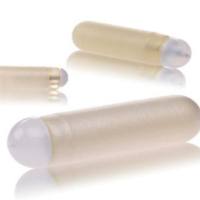Oat (Avena sativa L.), a worldwide temperate cereal crop, is deficient in tolerance to osmotic stress due to drought and/or salinity. To genetically transform the available commercial oat cultivars, a genotype-independent and efficient regeneration system from shoot apical meristems was developed using four oat cultivars: Prairie, Porter, Ogle, and Pacer. All these oat cultivars generated a genotype-independent in vitro differentiated multiple shoots from shoot apical meristems at a high frequency. Using this system, three oat cultivars were genetically co-transformed with pBY520 (containing hva1 and bar ) and pAct1-D (containing gus ) using biolistic™ bombardment. Transgenic plants were selected and regenerated using herbicide resistance and GUS as a marker. Molecular and biochemical analyses of putative transgenic plants confirmed the co-integration of hva1 and bar genes with a frequency of 100%, and 61.6% of the transgenic plants carried all three genes (hva1 , bar and gus ). Further analyses of R0, R1, and R2 progenies confirmed stable integration, expression, and Mendalian inheritance for all transgenes. Histochemical analysis of GUS protein in transgenic plants showed a high level of GUS expression in vascular tissues and in the pollen grains of mature flowers. Immunochemical analysis of transgenic plants indicated a constitutive expression of hva1 at all developmental stages. However, the level of HVA1 was higher during the early seedling stages.
The characteristic of HVA1 expression for osmotic tolerance in transgenic oat progeny was analyzed in vitro as well as in vivo. Transgenic plants exhibited significantly (P <0.05) increased tolerance to stress conditions than non-transgenic control plants. The symptoms of wilting or death of leaves as observed in 80% of non-transgenic plants due to osmotic stress was delayed and detected only in less than 10% of transgenic plants. These observations confirmed the characteristic of HVA1 protein as providing or enhancing the osmotic tolerance in transgenic plants against salinity and possible water-deficiency stress conditions.






